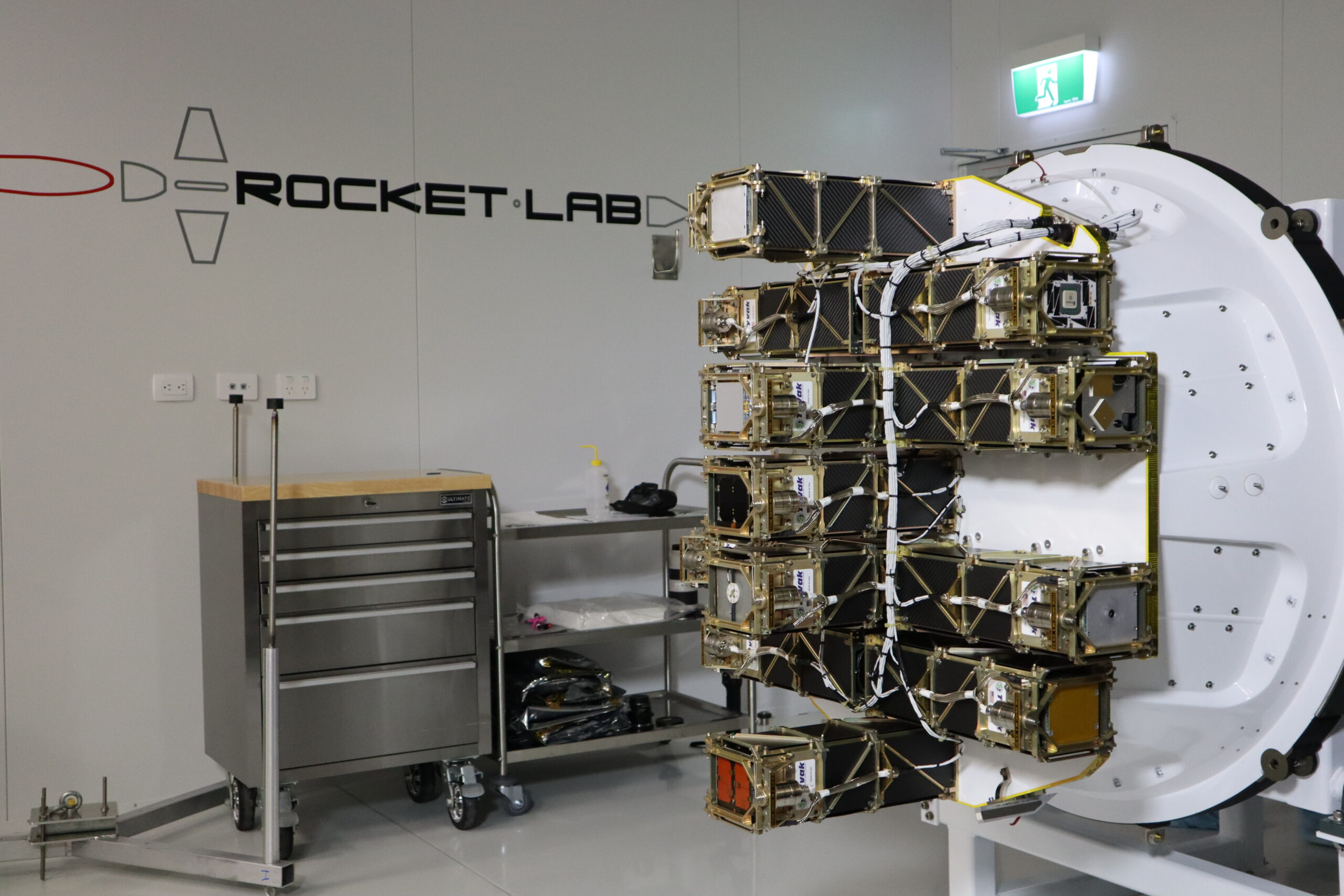CubeSat Handling of Multisystem Precision Time Transfer
CHOMPTT is emitting StenSat packets, an AX.25 UI frame sent using AFSK1200 modulation. You can help us keep track of CHOMPTT’s status by uploading these packets. Listen for the beacon at a carrier frequency of 437.56 MHZ with 1200 baud AFSK modulation. There are “Bus packets” (CHOMPTT) and “Opti packets” (OPTI). Since StenSat cannot send binary data, all telemetry is encoded in ASCII85.

The Educational Launch of Nanosatellites 19 (ELaNa 19) payload is prepared to be encapsulated inside the Rocket Lab Electron rocket payload fairing on Dec. 1, 2018, at the company’s facility in New Zealand. The ELaNa 19 payload comprises 10 CubeSats selected through NASA’s CubeSat Launch Initiative. The liftoff marks the debut of the agency’s innovative Venture Class Launch Services (VCLS) effort. Managed by NASA’s Launch Services Program at Kennedy Space Center in Florida, VCLS was developed to offer small payloads dedicated rides to space.
credit
Rocket Lab
The CubeSat Handling of Multisystem Precision Time Transfer (CHOMPTT) mission will demonstrate new technology for navigation, communications and networking in space. This MAE-led mission is a collaboration between the University of Florida and the NASA Ames Research Center. Principal Investigator for the CHOMPTT mission, MAE Prof John Conklin and his team of graduate and undergraduate students in the Precision Space Systems Lab designed, built and tested the mission’s precision timing payload. The UF payload was integrated with a NASA Ames Research Center spacecraft bus to form a 3U (3 unit) CubeSat measuring 10 cm x 10 cm x 34 cm. Launch of the CHOMPTT satellite was on December 16th, 2018 on the Rocket Lab Electron vehicle from their New Zealand launch facility.
You can read more about CHOMPTT on the NASA website: https://www.nasa.gov/image-feature/elana-19-chomptt
CHOMPTT uses a satellite laser ranging facility located at the Kennedy Space Center to transmit 2.5 nanosecond infrared laser pulses to the CHOMPTT spacecraft in low Earth orbit. These pulses are timed with an atomic clock on the ground and are detected by photodetector on CHOMPTT. An event timer records the arrival time with respect to one of the two on-board chip-scale atomic clocks with an accuracy of 100 picoseconds (equivalent to a navigation accuracy of 3 cm). At the same time, a retroreflector returns the transmitted beam back to the ground. By comparing the transmitted and received times on the ground and the arrival time of the pulses at the CubeSat, the time difference between the ground and space clocks can be measured. This compact, power efficient and secure synchronization technology will be useful for future space navigation, communications, networking, and distributed aperture telescopes.
